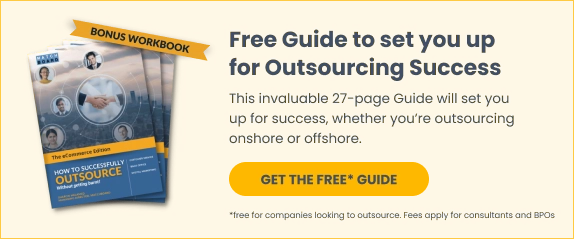Contact Centre
Which Australian companies are outsourcing their contact centre services?

Most large organisations outsource at least some contact centre activity while maintaining the rest in-house. This may be referred to as a hybrid, or champion-challenger, operating model. Here’s a list of 20 Australian brands that outsource at least part of their contact centre in 2025 (in alphabetical order):
– AGL (4.6 million services)
– ANZ (8.5 million customers)
– Australian Super (3.5 million members)
– Australian Taxation Office (20.5 million active tax file numbers)
– Bupa Health Insurance (4 million+ customers)
– Energy Australia (1.6 million customers)
– Flybuys (10 million customers)
– HCF (2 million customers)
– IAG (8.5 million customers)
– Macquarie Group (1.7 million customers)
– Medibank (4 million customers)
– NAB (8.5 million customers)
– Optus (10.7 million customers)
– Origin Energy (4.7 million customers)
– Qantas (16 million frequent flyer members)
– Spotlight Retail Group (15 million loyalty club members across Spotlight and Anaconda brands)
– Telstra (24.9 million retail mobile services)
– Virgin Airways (13 million Velocity members)
– Vodafone / TPG Group (5.62 million mobile customers)
– Westpac (12.7 million customers)
Contact centre outsourcing by industry
The top 3 private sector industries in Australia that outsource call centres or contact centres are:
- Telecommunications
- Energy (electricity and gas retailers), and
- Financial services (including banking, insurance, fintech and superannuation)
Unsurprisingly, these are industries which touch every consumer, where the main players have millions of customers each. Outsourcing is a key component of the service strategy of most companies at this scale.
Around 18 years ago, the ATO (Australian Taxation Office) set in train a trend for Government departments and agencies to also outsource contact centres (at the time, Matchboard’s Founder Sharon Melamed was at Excelior, a BPO since acquired by Serco, which won the initial outsourcing work with ATO). Under the Albanese Labor Government, outsourcing has been significantly wound back over the last four years in favour of internal recruitment.
Some agencies, like Service NSW, became outsourcing organisations themselves, taking calls for a range of other Government agencies and departments. Service NSW is now akin to a one-stop shop for government services, delivered through a variety of channels (contact centre, apps, websites, and in-person).
The security and technology environments are just as strict for the outsourcing companies in Australia as for the Government’s own contact centres, but outsourcing provides the added advantage of flexibility to respond to the peaks and troughs caused by new Government initiatives or unplanned events. In fact, contact centre outsourcers are instrumental to the management of surge capacity during crises such as pandemics.
Not every call centre outsourcing company can do work for Government agencies like the ATO – there are panels of preferred suppliers, assessed through a competitive and rigorous procurement process (for example once every few years), and if you’re not on the panel, you can’t respond to an RFT (request for tender).
At the local Government level, councils typically outsource contact centres for after-hours coverage, as they need to be available for emergencies around the clock. While councils prefer to outsource to providers in their own State, most show flexibility and prioritise the best value for money and quality of service. This observation is based on the nine councils which have placed contact centre outsourcing requests on Matchboard.
Catalysed by the pandemic, companies in the ecommerce and logistics sectors drove a wave of contact centre outsourcing, particularly offshore. City Chic, Harvey Norman, Sleeping Giant, Spotlight Retail Group, Oodie and Koala are examples of retail brands with customer teams in the Philippines and/or Fiji.
Where do Australian companies outsource contact centre services?
Australian companies outsource onshore, nearshore (New Zealand) or offshore (overseas).
Government and health organisations nearly always outsource call centre services onshore. For example, Healthdirect Australia (owned by both State and Federal Government) mandates onshore delivery when procuring outsource partners for its various health hotlines (including the Pregnancy, Birth and Baby, My Aged Care and nurse-on-call services).
Companies with small call volumes often find it’s not worth the effort going offshore, as local Australian call centre providers charge on consumption (per minute) and are happy to take on small volumes in a blended setting (where one call centre agent may be handling calls on behalf of many companies). This is sometimes known as a bureau service.
55% of outsourcing requests on Matchboard over the years 2020 to 2025 preferenced Australia as the delivery location.
Offshore, Fiji is now a serious challenger to more established markets such as the Philippines, India and South Africa, with the volume of contact centre outsourcing contracts awarded to Fiji BPOs similar to market leader the Philippines two years in a row on Matchboard’s platform.
Behavioural economics shows that people will often choose the middle option when presented with three options, and New Zealand, with a pricepoint 15-20% less than Australia, but still 40% more than developing countries, often appeals to businesses that need a cost saving but aren’t willing to compromise on accent familiarity or geographical proximity. In 2025, 6% of outsourcing requests on Matchboard preferenced New Zealand.
Trends in contact centre outsourcing
The inhouse / outsource pendulum has swung back and forth over the last few years. Big brands like Telstra, Optus, Origin Energy, Alinta and Westpac brought back large numbers of call centre agents onshore from outsource partners in the Philippines and India. This was triggered by service disruptions in those countries during the pandemic. Some of the work moved from offshore outsourcing to onshore inhouse, however local contact centre outsourcers also picked up some significant contracts.
Contrary to perception and reporting by some analysts, it’s worth noting that Telstra still outsources digital (email, chat, social media) customer service offshore, while calls are now handled in Australia for the consumer and SME segments.
Another trend is risk diversification – companies that used to have all their eggs in one basket offshore realised that they need another location option to reduce risk. This is most common amongst large enterprise, where India and the Philippines is the most prevalent pairing. Mid-tier companies Airtasker and Prospa (who spoke on a panel at Matchboard’s BPO Exchange event in October 2025) experimented with a multi-country outsourcing strategy but both found that, relative to their scale, centralising customer operations offshore in just one country (the Philippines) was more efficient.
A further driver of contact centre outsourcing this year is the workforce and skills shortage in Australia. Companies are struggling to find talent in every capital city, and engaging an outsource partner is helping to bridge the workforce gap.
On balance, increased contact centre volumes have resulted in growth in both the size of inhouse operations and call centre outsourcing companies, both in Australia and overseas.
Finally, and significantly, AI is disrupting contact centre outsourcing and the BPOs that are embracing it to increase efficiency and expand their offerings are benefiting. Greater efficiency allows outsourcing companies to be more competitive on price, and AI creates efficiency in almost every area: from recruitment (speeding up candidate shortlisting and onboarding), to quality assurance (where AI can analyse 100% of customer interactions versus humans just monitoring a small sample), and even sales (instantly gathering information on prospects to inputs into RFP responses.)
Australian companies looking to outsource are increasingly asking for a combination of human+AI/bot services, for example a chatbot to triage and answer basic questions, and routing to a human where empathy, negotiation, selling or relationship-building skills are required.
White paper: Outsourcing Advantages and Models
Last updated on: November 5, 2025

